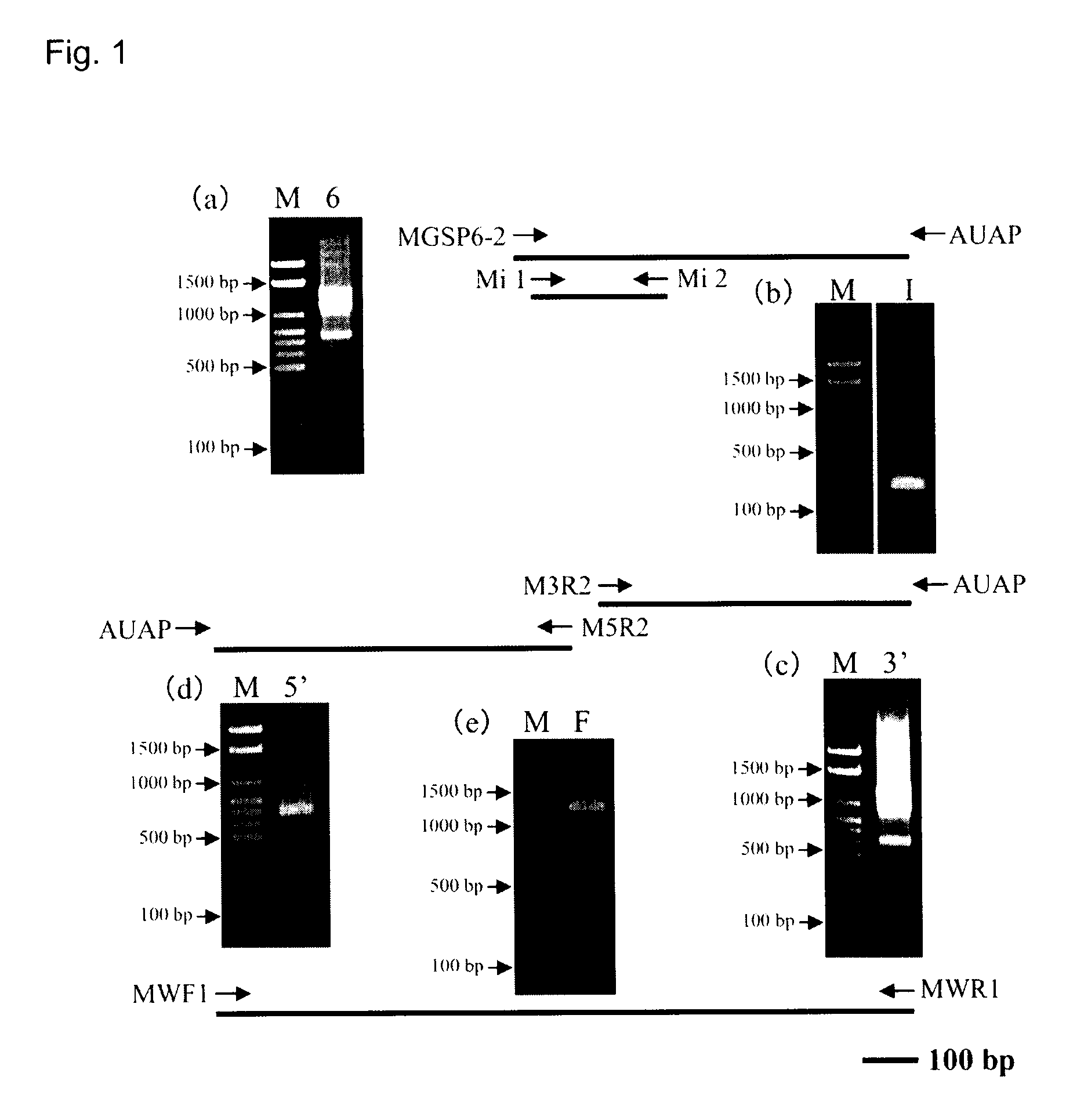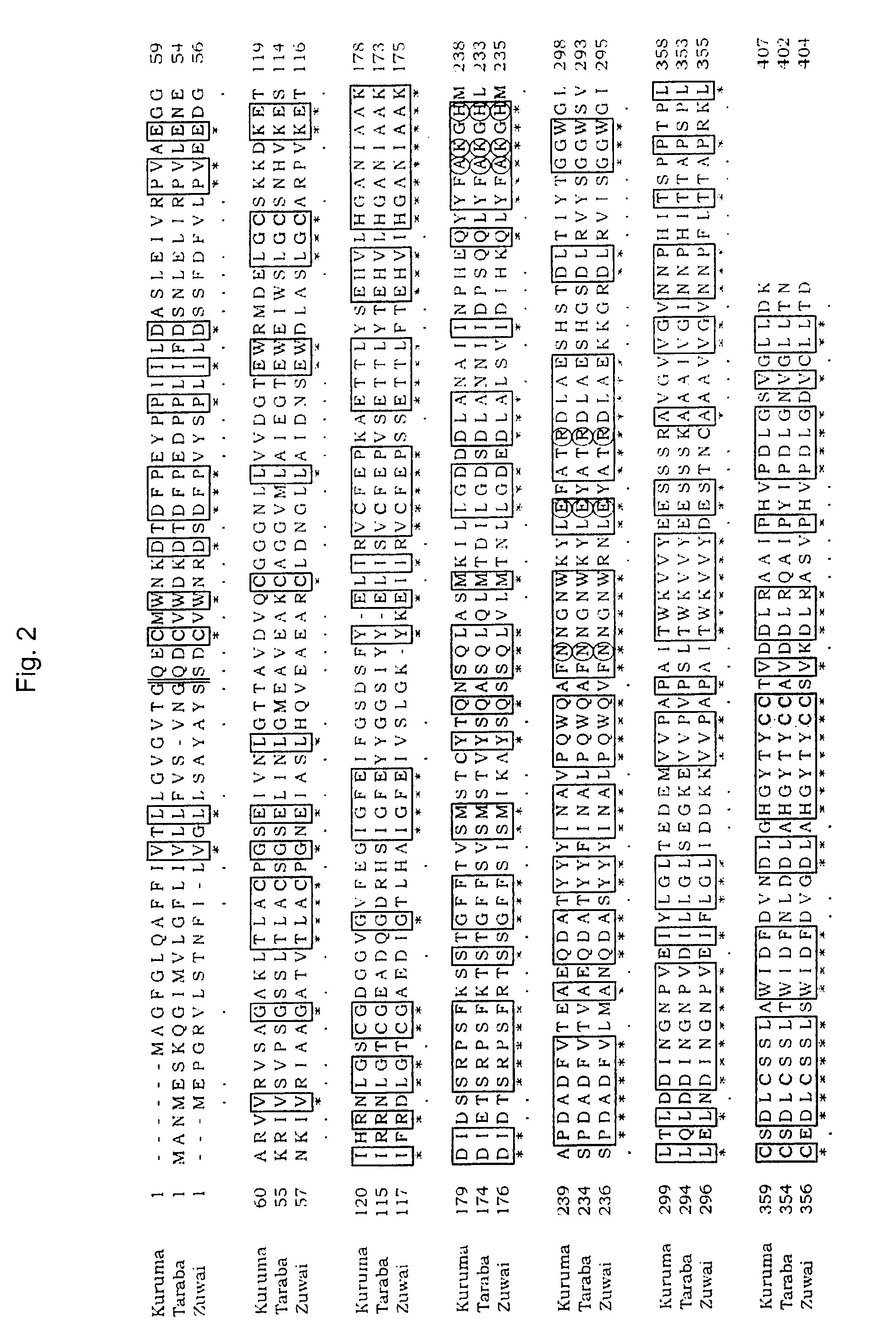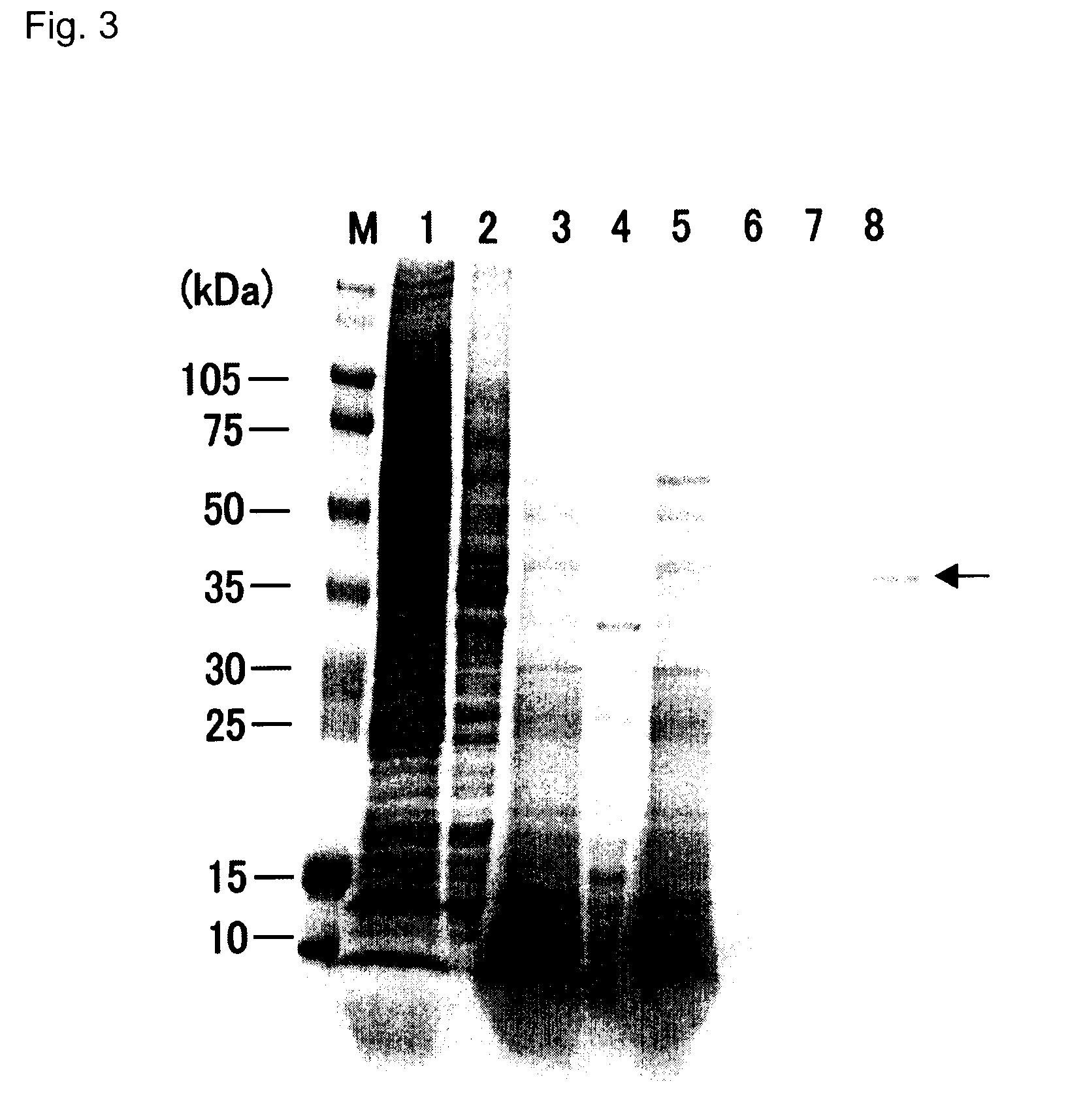Thermostable duplex-specific nuclease
- Summary
- Abstract
- Description
- Claims
- Application Information
AI Technical Summary
Benefits of technology
Problems solved by technology
Method used
Image
Examples
example 1
Preparation of Chionoecetes opilio Hepatopancreas-Derived cDNA
[0073]We have found that DSN is expressed in the hepatopancreas of Chionoecetes opilio and, in order to isolate and identify its gene, a hepatopancreas-derived 1st strand cDNA was firstly prepared by the following methods.
(1) Collection of Hepatopancreas from Chionoecetes opilio
[0074]Fresh Chionoecetes opilio landed at Ajiro Port, Tottori, was purchased and dissected to collect the hepatopancreas. About 100 mg portion of the thus collected hepatopancreas was immediately soaked in 1.2 ml of RNAlater (manufactured by QIAGEN) and stored at 4° C. for 16 hours. The thus soaked hepatopancreas was took out using a pair of tweezers, put into a new Eppendorf tube and stored at −80° C. until its use.
(2) Extraction of Total RNA
[0075]Total RNA was extracted from the Chionoecetes opilio hepatopancreas stored at −80° C. using RNeasy Mini Kit (manufactured by QIAGEN). Procedure of the purification operation was carried out in accordanc...
example 2
Determination of Nucleotide Sequence of Chionoecetes opilio DSN Gene
[0077]Using a Chionoecetes opilio hepatopancreas-derived 1st strand cDNA prepared by the method of Example 1 as the template, an internal sequence of the DSN gene was firstly obtained, and then a 3′ region sequence was determined based on the thus obtained internal sequence. Then a 5′ sequence region was determined, thus finally resulting in the determination of nucleotide sequence of complete cDNA of the Chionoecetes opilio DSN gene (SEQ ID NO:20). FIG. 1 is an outline of the cloning of a partial sequence and complete sequence of the Chionoecetes opilio DSN gene, showing schematic view of the positions of the used primers and agarose gel electrophoresis images of the respective PCR amplification products (lane M; DNA size marker, lane 6; PCR amplification product by primers GSP 6-2 and AUAP, lane I; PCR amplification product by primers Mi 1 and Mi 2, lane 3′; PCR amplification product by primers M3R2 and AUAP, lane...
example 3
Cloning of Chionoecetes opilio DSN Complete Length Gene
[0091]Thus, we have determined the cDNA nucleotide sequence (SEQ ID NO:20) from the nucleotide sequence of mRNA of the Chionoecetes opilio DSN by Example 2, and then Chionoecetes opilio DSN complete length gene (SEQ ID NO:1) was cloned by designing primers MWF 1 (SEQ ID NO:12) and MWR 1 (SEQ ID NO:13). An electrophoresis image of the complete length gene is shown in FIG. 1(e).
[0092]Reverse transcription and PCR reactions were carried out using ReverTra-Plus-™ (manufactured by TOYOBO). Firstly, a cDNA was synthesized by the reverse transcription reaction shown below. A 1 μg (0.5 μl) portion of total RNA extracted from the Chionoecetes opilio hepatopancreas was used as the template. After mixing 0.5 μl of the total RNA, 5 μl of an oligo(dT) 20 primer (SEQ ID NO:17) (10 μM) and 6.5 μl of the RNase Free H2O, a heat treatment at 65° C. for 5 minutes was carried out and then quick cooling on ice was carried out. As a reaction buffer, ...
PUM
| Property | Measurement | Unit |
|---|---|---|
| Temperature | aaaaa | aaaaa |
| Temperature | aaaaa | aaaaa |
| Temperature | aaaaa | aaaaa |
Abstract
Description
Claims
Application Information
 Login to View More
Login to View More - R&D
- Intellectual Property
- Life Sciences
- Materials
- Tech Scout
- Unparalleled Data Quality
- Higher Quality Content
- 60% Fewer Hallucinations
Browse by: Latest US Patents, China's latest patents, Technical Efficacy Thesaurus, Application Domain, Technology Topic, Popular Technical Reports.
© 2025 PatSnap. All rights reserved.Legal|Privacy policy|Modern Slavery Act Transparency Statement|Sitemap|About US| Contact US: help@patsnap.com



